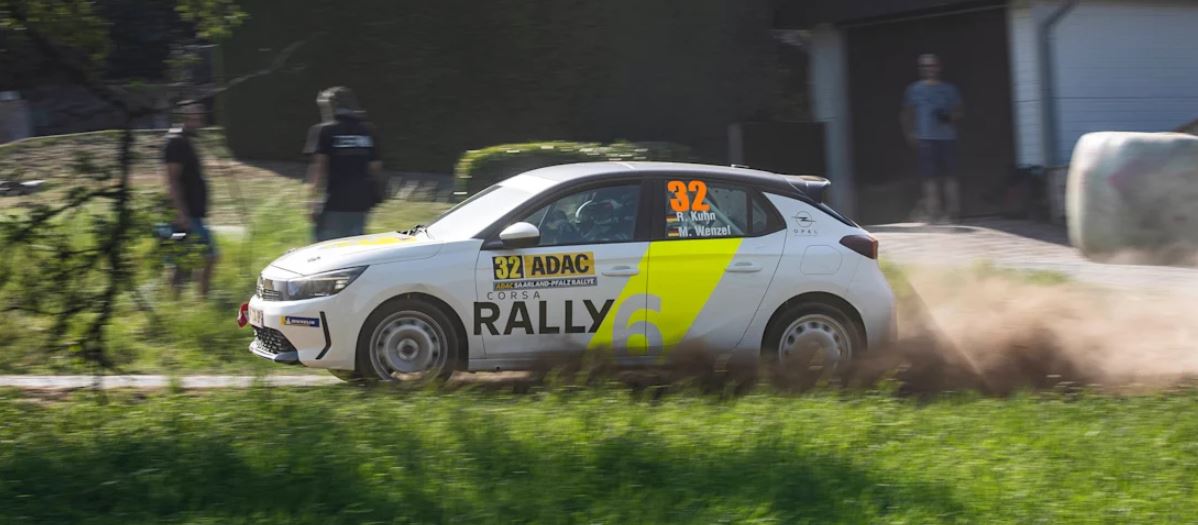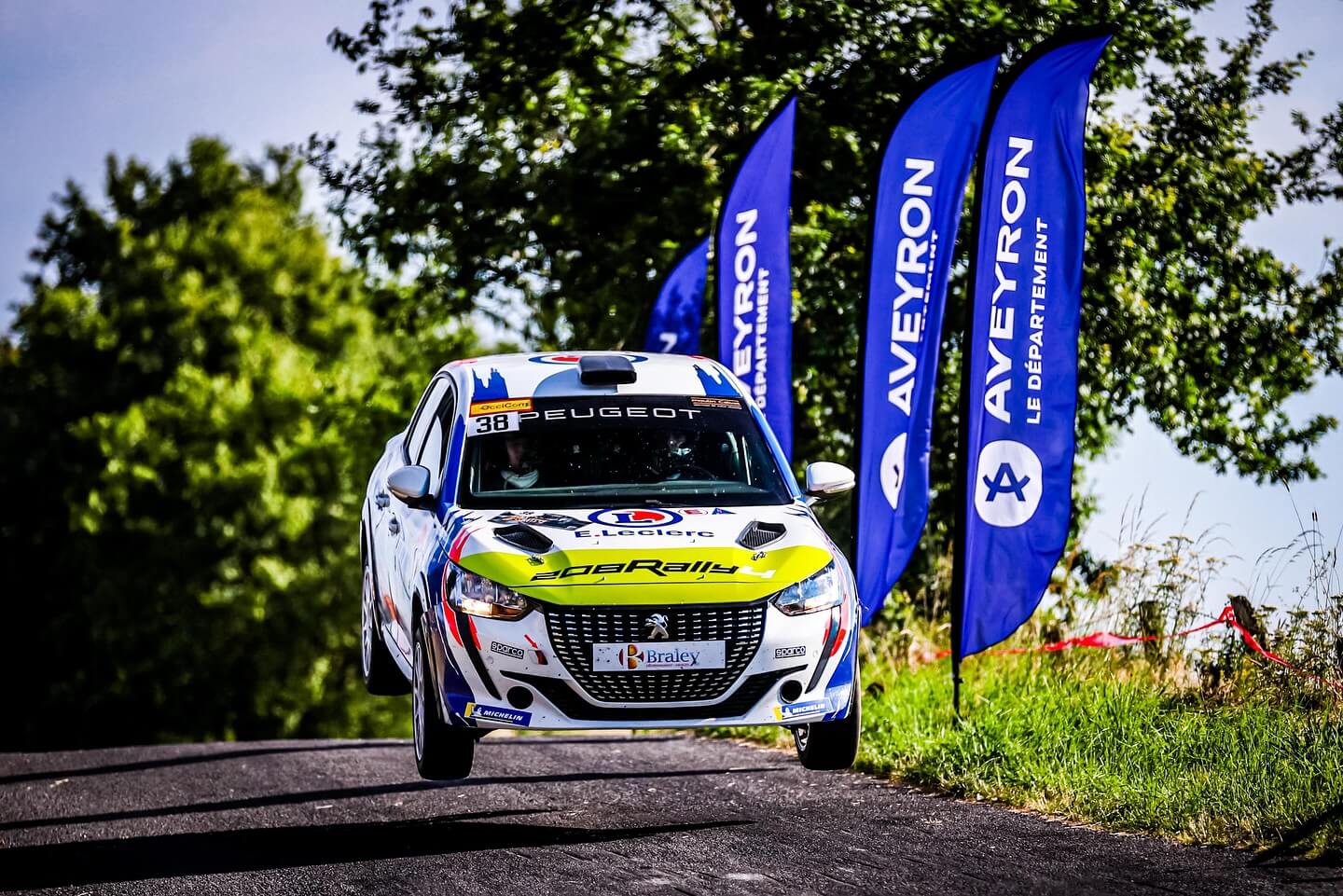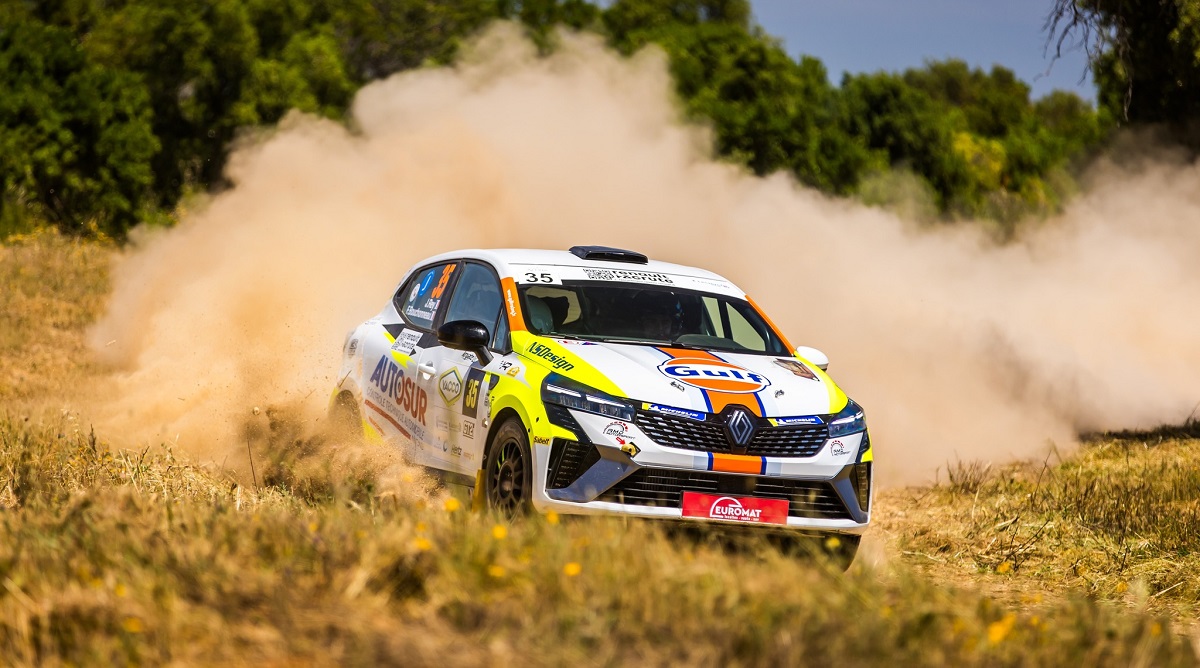Becoming a rally co-driver: a complete guide to getting started
By RobinB on 04 February 2025 RallyAre you passionate about rallying and ready to shift from spectator to participant? Becoming a co-driver might be the perfect path for you! 😉
Often working behind the scenes, this role is nonetheless crucial: it requires organization, precision, calmness under pressure, and meticulous preparation. With the right resources and a methodical approach, becoming a co-driver is achievable, even for beginners.
Eager to get started? This practical guide will walk you through the steps to take your place in the right seat and embark on this exciting journey with confidence. 💪
1. How to Start as a Rally Co-Driver
Becoming a co-driver is possible from the age of 16. In France, as of January 1, 2024, you can even obtain a driver’s license at the age of 17, making it easier to access certain licenses. For those under 19, a specific license allows you to co-drive without a license.
To officially participate in a rally, you must have a license issued by the French Motorsport Federation (FFSA).
ℹ️ There are three main licenses ⤵️
- NJR (National Junior Auto): For those under 19, it allows co-driving in national and regional events but does not permit driving. Cost: €142.
- RCC (Regional Competitor Driver Auto): Permits driving in regional events and co-driving in national events. Cost: €270.
- NCC (National Competitor Driver Auto): Permits driving and co-driving in all FFSA events. Cost: €465.
License applications are made through a Sporting Automobile Association (ASA) and require:
- A medical certificate confirming no contraindication to motorsport practice 👨⚕️
- An ASA membership fee (~€50), which varies by association (List of ASAs on the FFSA website).
- A complete application including the license request, medical certificate, and a single payment covering the membership fee and license cost.
ℹ️ For minors, a parental authorization is required, and the legal representative must subscribe to a "competitor guardian" license (€86). Once these formalities are completed, you’ll be ready for your first experience as a licensed co-driver 🥳
Haven’t found a driver yet? Your ASA might be able to connect you with drivers looking for co-drivers. Also, consider social media or specialized classifieds sites like GoToTheGrid, which feature requests for drivers and co-drivers 😉
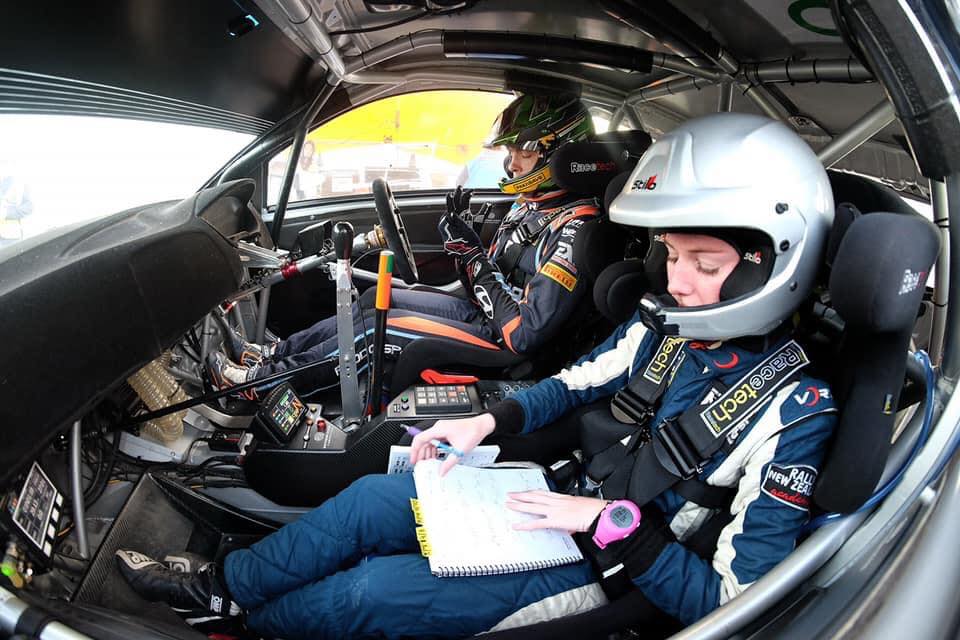
2. Essential Equipment for a Rally Co-Driver
To co-drive in a rally, you need certified equipment that meets safety standards. These requirements have become stricter in recent years, making certain items mandatory for national and regional events. While the investment may seem significant, you can reduce costs by renting or purchasing second-hand gear 💰
⚠️ Mandatory Rally Equipment (FIA Certified) ⚠️
- Helmet (around €500). It must be compatible with the communication system installed in the car and your driver’s system.
- HANS device (around €300), for neck protection.
- Fireproof suit (around €400).
- Racing boots (around €150), mandatory since 2017.
- FIA-approved fireproof underwear (socks, pants, top, balaclava), mandatory since 2022. Complete packs are available for around €180.
Optional Equipment
Certain accessories, not mandatory but highly recommended, make the co-driver’s job easier and more comfortable:
- Spiral notebook or ring binder: A5 or A4 format. Allows easy page turning and adding extra sheets. Ideal for organizing and modifying notes (additions, corrections).
- Pens, grease pencils, and erasers: At least two or three reliable ballpoint pens. Grease pencils (2B or 3B) for easy corrections, with erasers and sharpeners (or spare leads).
- Sticky notes or adhesive bookmarks: Help quickly locate information in the road book or notes.
- Plastic folder or document protector: Protects papers and the time card from moisture, dust, and mud.
- Small reading lamp or flexible book light: While the car often has a map light, a backup lamp is handy in case of failure or malfunction.
- Copies of important documents: Always have a backup (paper or digital) of essential documents to avoid issues if the originals are lost or damaged.
- Stopwatch or watch with a timer: Essential for calculating allowed times and maintaining schedules. Some co-drivers carry two (one main and one backup).
- Light tool kit: Include tape, a multi-tool screwdriver, cloths, and scissors or a cutter. Useful for minor mechanical issues, patching bodywork, or cleaning a windshield.
- Transport bag or organizer: Keep all personal items (licenses, notebooks, pens) and tools in one place. A bag with compartments ensures easy access and prevents loss.
ℹ️ Budget between €1,200 and €1,600 for a complete set of equipment. To reduce expenses, consider renting or buying second-hand items from specialized platforms like GoToTheGrid. Check out the pilot and co-driver equipment currently available 👌
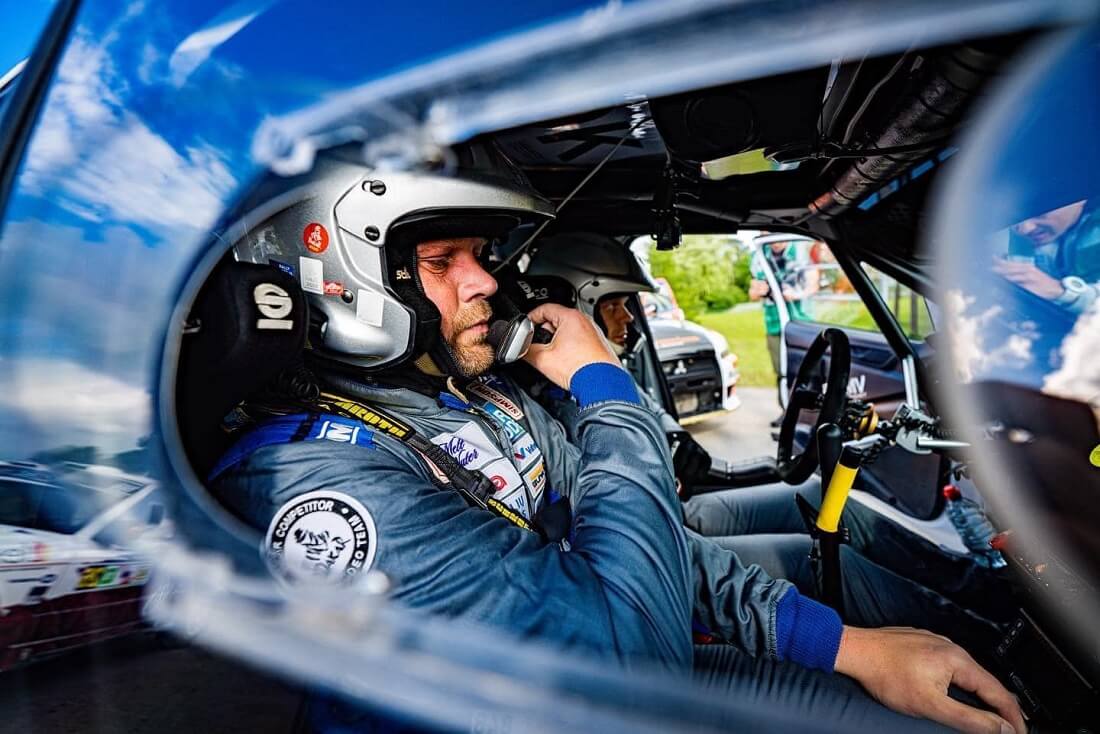
Modern Tools for Co-Drivers
Modern tools like electronic tripmasters and onboard cameras simplify a co-driver’s tasks: managing notes, analyzing performance, and navigating accurately. Although optional, they are particularly useful in demanding competitions.
3. The Administrative Responsibilities of the Co-Driver
The co-driver, the administrative backbone of the team, ensures smooth operations and adherence to regulations before and during the rally. This role demands organization, precision, and diligence 👌
📍 Before the Rally
The co-driver ensures that the registration process is complete: submission of documents, payment of entry fees, and validation of licenses.
ℹ️ In France, it is common practice for the co-driver to cover all or part of the entry fees. Depending on the agreement with the driver, they may also handle the rental or loan of a reconnaissance car.
A thorough review of the event’s supplementary regulations is crucial to identify restrictions, timing zones, and key schedules. The co-driver prepares a "race book" compiling essential information (maps, important contacts, reconnaissance schedule) to anticipate contingencies and optimize logistics.
📍 Administrative and Technical Checks
Before the rally starts, the team must attend administrative and technical checks at the time specified by the organizers. Administrative checks include validating licenses, driver’s permits, and other required documents. Once these are complete, the focus shifts to technical checks.
During technical checks, the vehicle is inspected: the technical passport, roll cage, and safety equipment (extinguishers, master switches, etc.) are examined for compliance. The crew must also present mandatory gear (helmet, fireproof suit, HANS device, etc.) for approval.
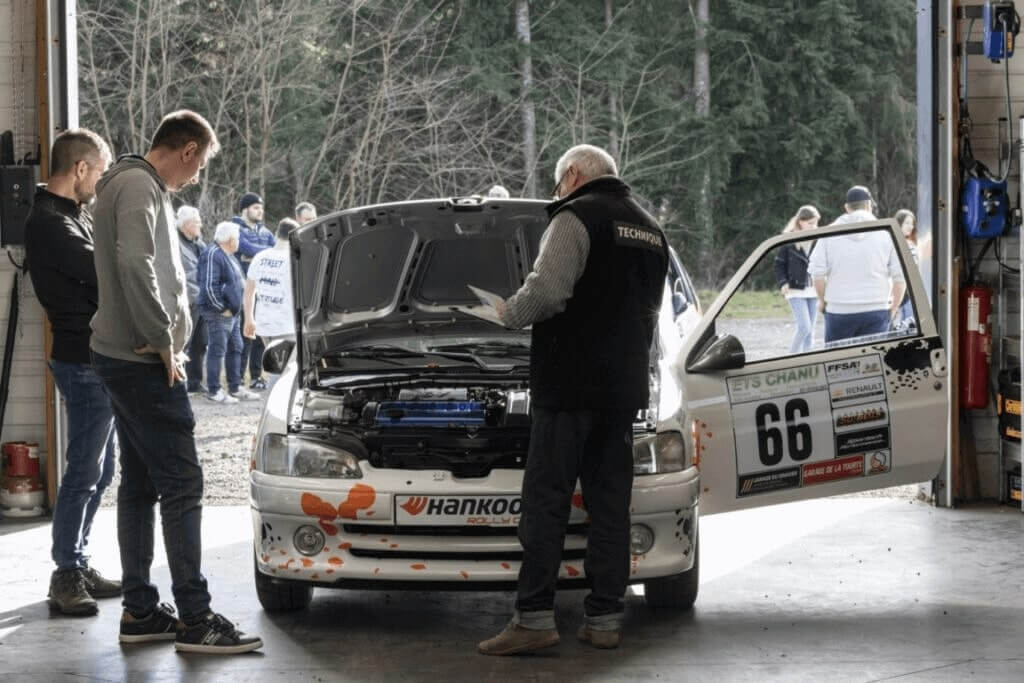
Once all inspections are passed, the car is placed in parc fermé until the start. Any delays or non-compliance during checks can result in penalties or disqualification from the rally.
📍 During the Rally: Managing Time Controls
The time card is essential for the co-driver to ensure adherence to schedules. Any delay or early arrival results in penalties, making it vital to follow the official time indicated by the marshals.
ℹ️ For instance, if you leave parc fermé at 10:00 AM with 35 minutes of transit time, the ideal check-in time at the next control zone (CH) is 10:35 AM. Present your time card between 10:35:00 and 10:35:59 to avoid penalties. At 10:34, the co-driver gets out, checks the marshals’ clock, and signals the driver to move forward. At 10:35, hand over the time card for signing and validation by the marshals. Retrieve it immediately and proceed with the rally.
Note: At the check-in for a special stage (SS), the co-driver must not exit the car. The entire crew must remain inside to complete the check-in as per regulations.
❌ In case of early or late arrivals, penalties are strict ➡️ 60 seconds per minute early, 10 seconds per minute late, and a delay exceeding 15 minutes may lead to exclusion. Stick to your schedule diligently!
📍 Control Zones and Regroupings
Each control zone is marked by specific signs: yellow for the entry, red for the time control post, and beige for the exit. Do not slow down or stop until you pass the yellow sign, or you may face penalties.
Regroupings allow for recalibration of the intervals between cars and sometimes provide a logistical break. Upon arrival, present the time card for validation. Strictly adhere to the planned departure order, which may be reorganized based on the overall standings after each stage.
📍 Practical Tips
Always store the time card in the same place to avoid misplacing it, and systematically check the marshals’ entries. In case of unforeseen issues (delay or mechanical problems), wait until you reach the next zone to recalculate your timing. This minimizes stress and ensures efficient check-ins.
Tip: Synchronize your watch at the start, prepare your documents in advance, and carefully review the time card before leaving each control zone. Good preparation will help you stay focused and avoid errors.

4. The Note System: The Heart of Co-Driving
The note system is the co-driver’s primary tool. Dictated during the special stages, these instructions describe every turn and anticipate potential hazards. Each team adopts a customized method tailored to the driver’s style 📖
Precise and Adapted Notes
During reconnaissance, the co-driver records the driver’s observations in coded form. The notes, clear and tailored, must perfectly align with the driver’s preferences. Several systems are commonly used:
- Numbers: Assigning a number to the turn's sharpness (e.g., 1 for very tight, up to 6 or 7 for very open).
- Degrees: Indicating the angle of the turn (e.g., “Right 90°”).
- Gear Ratios: Associating each turn with a gear shift.
- Detailed Descriptions: Using terms like “tight,” “open,” or “no apex.”
The driver must process this information instantly, requiring a precise vocabulary and a well-practiced rhythm of delivery.
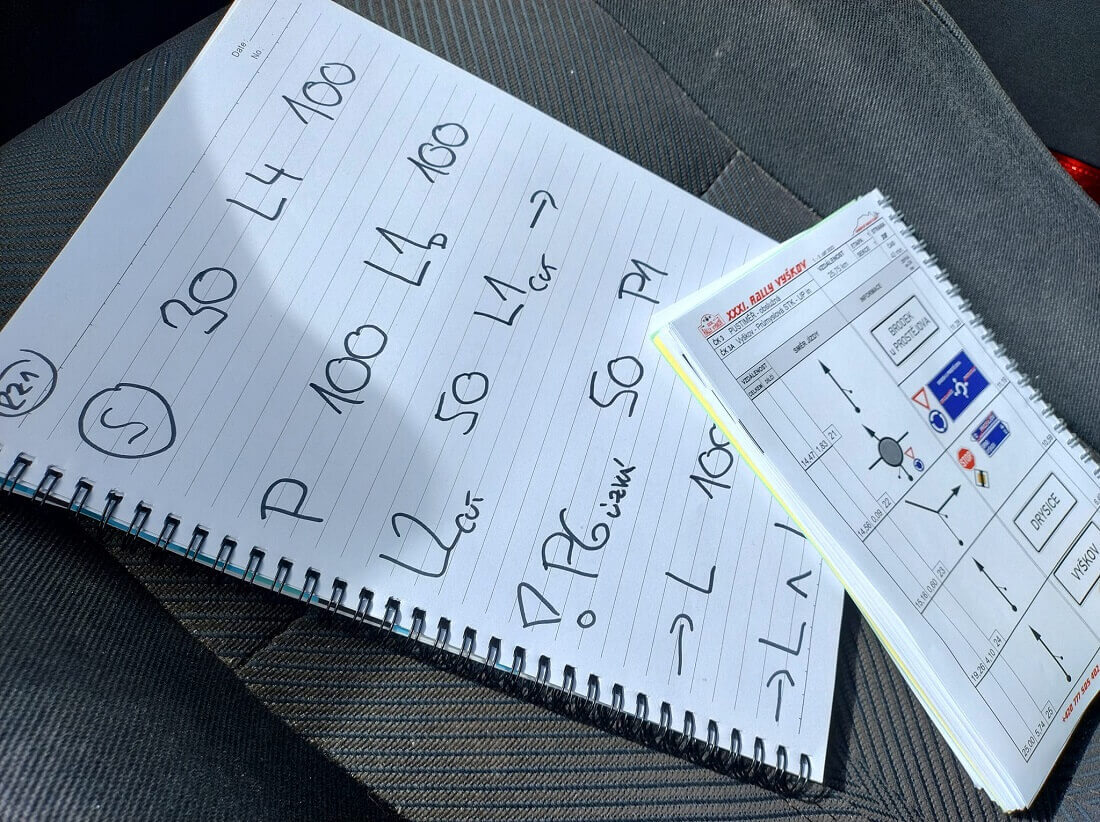
The Importance of Reconnaissance
Reconnaissance is essential to creating and refining notes. Typically, teams have three passes per special stage:
1st pass: Drafting the base notes.
2nd pass: Adjusting and correcting details.
3rd pass: Fine-tuning the rhythm to match the driver’s style.
ℹ️ Note: In world rallies (WRC) or gravel events, the rules may vary. For example, in the WRC, teams are often limited to two passes due to specific constraints like surface preservation or international logistics. Always consult the event's supplementary regulations for precise guidelines.
These steps allow the notes to adapt: some drivers prefer quick, rhythmic calls, while others need more relaxed cues. Tailoring the notes ensures smooth communication and builds trust between the driver and co-driver.
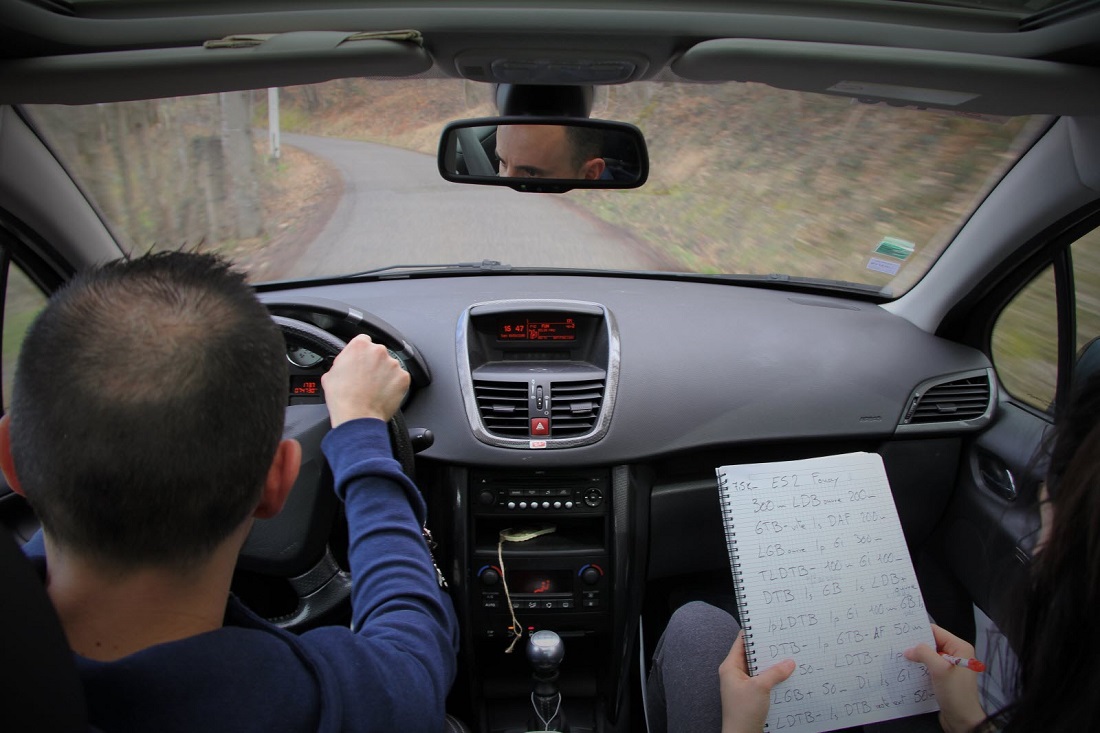
📅 Reconnaissance is scheduled within specific time slots, usually in the days leading up to the competition. This phase is governed by strict rules to ensure fairness among competitors and minimize disruption to locals. Compliance with these rules is critical, as violations may result in penalties or even disqualification.
🚦 Adhering to Traffic Laws: During reconnaissance, it is mandatory to drive at reduced speeds and follow all traffic regulations.
🎥 Reviewing Onboard Footage: After reconnaissance sessions, the team reviews video recordings to identify potential errors and refine the notes. This visual check enhances route memorization and ensures optimal preparation.
📝 Organizing Notes: The co-driver ensures the notes are clear and precise by erasing corrections, numbering pages (ideally in a spiral-bound notebook for easy flipping), and indicating the distance to the next note at the bottom of each page. This step greatly reduces the risk of errors on race day.
Dynamic and Evolving Notes
In competition, the tone and timing of delivery are as crucial as the content. A moderate turn can be called calmly, while a challenging sequence requires a more assertive tone. If the driver loses focus or needs guidance, the co-driver can switch to "visual mode," relying on landmarks. Notes are never static; they evolve with experience, driver feedback, and terrain conditions.
ℹ️ A well-developed note system is a major asset. It provides the driver with a clear view of the course and allows the co-driver to directly influence pace and precision. On special stages where every second counts, this synergy can be the difference between an average result and a top performance.
5. Steps Before and During the Race
The co-driver's role goes far beyond simply navigating special stages. Preparation before the race and diligence on the field are essential keys to ensuring the team's success.
Before the Race: Impeccable Organization
In the days leading up to the rally, the co-driver plays a central role in reconnaissance, where they record and refine the driver’s notes. They also ensure the car complies with regulations and that all necessary materials are ready: the note book, watch synchronized with official time, lamp, and emergency tools.
This phase requires anticipation and a thorough understanding of the itineraries, control zones, and allotted times. Rigorous organization ensures that everything is in place for race day 👌
During the Race: Manage, Anticipate, Adapt
On the ground, the co-driver ensures precise management of practical and time-related aspects to avoid penalties. They meticulously follow the road book, time card, and deadlines while anticipating the driver’s needs before each special stage.
During special stages, they dictate the notes accurately, adjusting their rhythm and tone according to the complexity of the route and the driver’s preferences. In the event of unforeseen circumstances or if the driver loses focus, the co-driver can adapt their instructions and guide “by sight” using visual markers.
Between stages, the co-driver verifies the accuracy of time card entries, communicates with the support team to report any issues, and adjusts notes if needed to optimize performance.
An Essential Asset for Success
Every step, whether in preparation or during the race, demands constant vigilance and unwavering discipline. Through precision, adaptability, and organization, the co-driver plays a critical role in the team’s overall performance. Proper preparation and flawless execution on the field can make all the difference, transforming collective effort into a remarkable result.

6. The Driver-Co-Driver Relationship: A Key to Success
The relationship between the driver and co-driver is a fundamental element of rally performance. It relies on smooth communication, mutual trust, and constant adaptability to overcome unforeseen challenges and maintain team cohesion 💪
Clear and Adjusted Communication
The co-driver serves as the driver’s eyes. They must convey precise information and adjust their tone and rhythm to each situation: a firm tone for fast sequences, a calm voice for simpler sections. In cases of doubt or unexpected situations, they can repeat instructions or switch to “by sight,” relying on visual cues to guide effectively.
Trust: An Essential Foundation
Success is built on complete trust between the two team members. The driver must rely entirely on the co-driver’s calls, while the co-driver adjusts their notes and timing based on the driver’s feedback. This rapport develops over the course of multiple rallies and is crucial for handling unforeseen circumstances, such as weather changes, course modifications, or mechanical issues.
A Co-Driver Is More Than a Guide
Beyond the special stages, the co-driver provides moral support to the driver and often contributes to team logistics. Whether it’s finding sponsors, managing entries, or planning reconnaissance sessions, the co-driver is a true asset, enhancing the team’s performance and resilience when facing challenges.
7. Tips for Starting as a Co-Driver
Starting as a co-driver might feel intimidating, but by adopting the right practices and taking it step by step, you can progress quickly. The following tips will help you build a strong foundation and gain confidence.
1. Begin with Regional Rallies
Regional events, which are less demanding and more accessible, are ideal for gaining experience without the pressure of major competitions. Simpler routes and a relaxed atmosphere make learning easier.
2. Partner with a Beginner Driver
Teaming up with a driver who is also starting out allows you to learn together. This approach helps you adapt communication, adjust notes, and progress mutually. Online platforms or local ASAs are great resources for finding a partner.
3. Train in Advance
Participating in co-driving training sessions is an excellent way to grasp the basics: note management, reading the roadbook, timing, and preparation. These courses, often led by experienced professionals, provide a solid foundation for beginners.
4. Observe and Ask Questions
Before diving in, attend a rally as a spectator and talk to seasoned co-drivers to gather practical tips. Some ASAs even offer discovery days, perfect for preparing before taking the leap.
5. Stay Organized and Methodical
Organization is key. From the start, make it a habit to meticulously prepare your notebook, log essential details (timing, distances) in a dedicated book, and double-check your equipment (helmet, suit, time card) before each stage.
6. Build Rapport with the Driver
Complicity and mutual understanding are crucial. Discuss the driver’s preferences for rhythm and announcements, consider their feedback during reconnaissance, and tailor your notes to their needs for better efficiency during the rally.
7. Be Ready to Improvise
Rallies come with their fair share of surprises: changing weather, canceled stages, mechanical issues. Keep your composure, adapt quickly, and treat every situation as an opportunity to improve your responsiveness.
8. Progress Gradually
There's no need to jump into prestigious events right away. Limit yourself to a few rallies per year to gradually solidify your skills, manage your expenses, and build confidence.
9. Learn from Every Experience
Each rally is a learning opportunity. Take time to analyze your performance, identify what worked and what didn’t, and adjust your method accordingly. Even the most experienced co-drivers continue to learn and improve with each race.
By following these tips and learning from every experience, you'll gradually develop your confidence, efficiency, and enjoyment as a co-driver.
8. Common Mistakes and How to Avoid Them
Even the most experienced co-drivers face mistakes, but a preventive and thoughtful approach can significantly reduce their impact. The following highlights the most common pitfalls and ways to address them ✔️
1. Losing the time card
This document is essential, and losing it can lead to disqualification. Assign it a fixed spot in the car (pocket in the suit, dedicated compartment) and always return it to the same place to minimize the risk of forgetting it.
2. Errors in Timing Calculations
A simple math error can result in penalties. Double-check your calculations, synchronize your watch with the official time, and when in doubt, confirm with other co-drivers in the area.
3. Announcing Notes Too Early or Too Late
Poor timing can confuse the driver. Adjust your rhythm based on their feedback: some prefer notes well in advance, others closer to the action. Find the balance that maintains fluidity.
4. Poor Equipment Organization
A missing helmet or a dead flashlight can complicate everything. Before each day, prepare a checklist of essentials and verify them systematically (helmet, HANS, notebook, stopwatch, pen).
5. Insufficient Note Preparation
Imprecise notes harm the quality of the stage. During reconnaissance, take the time to refine each detail, then review them at home using onboard videos or reciting them aloud to identify inconsistencies.
6. Poor Stress Management
Pressure can lead to mistakes. Stay focused on your tasks, prepare mentally, and maintain calm and clear communication with the driver. Good emotional control helps avoid unnecessary tension.
7. Underestimating Unexpected Events
From changing weather to canceled stages or mechanical issues, be flexible. Build margins into your timing calculations and bring a small emergency kit (tape, screwdriver, cloth) to handle surprises.
8. Neglecting Post-Race Feedback
Every rally is a chance to learn. After the race, discuss with the driver and, if possible, other co-drivers to identify areas for improvement. This feedback drives your progression.
These challenges are part of the learning process. By staying methodical, attentive to driver feedback, and aware of areas for improvement, you'll gain confidence and efficiency with each new rally.
Conclusion
Becoming a rally co-driver means diving into an adventure filled with discipline, passion, and adrenaline. By equipping yourself properly, mastering the fundamentals, and building a strong relationship with your driver, you'll be ready to embrace this unique experience.
Start simple: participate in a regional rally, connect with experienced crews, and observe best practices. Each race will be a new opportunity to grow and refine your skills. So, are you ready to take the seat on the right-hand side?



